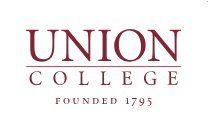Digging Deeper intro panel
Title
Digging Deeper intro panel
Transcript
In the winter of 2017, a lock of George Washington’s hair was discovered in the stacks of the Special Collections Department at Union College, triggering an international media storm. The lock of hair was found in a small envelope that was tucked inside a rare book entitled Gaine’s Universal Register (1793). The book belonged to Philip Jeremiah Schuyler, son of Major General Philip Schuyler, Sr., and the brother of Eliza (Schuyler) Hamilton, the wife of Alexander Hamilton.
Although media coverage focused on Washington’s hair, the discovery— the hair, the book, and the handwritten note on the envelope—all helped tell the story of the Schuyler (pronounced: SKY-ler) family and their role in the founding of Union College.
Although media coverage focused on Washington’s hair, the discovery— the hair, the book, and the handwritten note on the envelope—all helped tell the story of the Schuyler (pronounced: SKY-ler) family and their role in the founding of Union College.
Digging Deeper: How Hair, Hamilton, and a Burial Ground Brought New Light to the Schuyler Family and the Founding of Union College explores the personal connections between President George Washington and the Hamilton/Schuyler family. The exhibit also looks at the influence of Eliza Hamilton’s father, Major General Philip Schuyler, on the founding of Union College in 1795 and his crucial decision to locate the new college in Schenectady rather than Albany.
Digging Deeper also explores how the discovery of Washington’s hair expanded our understanding of Union’s own historical narrative. As the media told the story of the discovery on CNN and in the pages of the Washington Post and The New York Times, Andrew Cassarino ‘18 was researching the role of slavery in Union’s founding as part of his senior thesis. Andy’s research offers profound connections between the early founders and slaveholders, including the Schuylers. Like most affluent landowners at the time, the Schuyler family reaped great personal wealth from slave labor. As the Assistant Curator of this exhibition, Andy highlights his own research into the Schuyler family connection to slavery and recent archaeological discoveries at the Schuyler Flatts Burial Ground.
Thank you to the following people who helped with the exhibition: Lisa Anderson, Curator of Bioarchaeology and Molly Scofield, New York State Museum, Laura Lee, Archivist at the First Reformed Church in Schenectady, and Jessica Lux, Albany Institute of History & Art. We would also like to acknowledge the support of the Schaffer Library staff: Leslee Barkley, Andrea Belair, Marlaine DesChamps, Rebecca Fried, Matthew Golebiewski, Jennifer Goodwin, Julie Lohnes, Sarah Mottalini, and especially College Librarian Frances Maloy.

